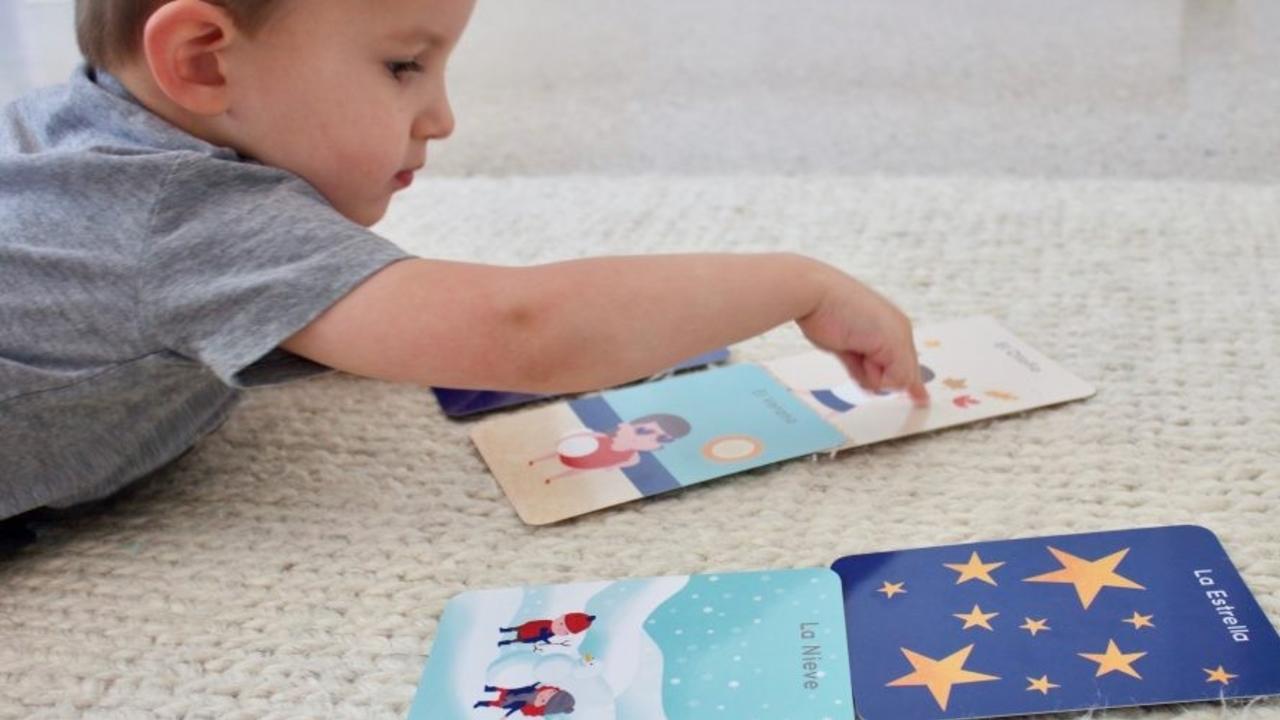LANGUAGE FLASHCARDS FOR KIDS

One of the best ways to introduce a language to a child is through the use of real-life items that will capture the attention of your child. Unfortunately, it is not always possible to use these items regularly which is why the addition of flashcards as a teaching tool is incredibly important.
As we teach our children a second language, it is important to remember that each child will learn in different ways. The use of flashcards takes this into account and are an important tool not only for visual but kinesthetic learners as well.
When buying flashcards or even creating your own, keep in mind that they need to be engaging for all children. Colors are important and make an impact on visual learners.
In taking steps to introduce each flashcard, it is important to show your child the flashcard picture first coupled with the correct pronunciation of the word. Once the child has made the connection with the sound to the picture, it is then best to show the text of the word. The is an important step to creating a connection in the brain between the picture, pronunciation and the word and will be stored in their long-term memory for future reference.
Rather than simply flipping through a set of flashcards, it's important to reinforce the vocabulary words throughout other areas of the lesson. This might look like focusing on ‘animal’ flashcards, reading a book that focuses on animals in the target language and singing a song that will use the same vocabulary.
As kids learn best when they’re having fun, I’ve included a list of some games you can play with a handful of Flashcards – Enjoy!
• BINGO: You can create a BINGO sight word board with the words or pictures from the flashcard and someone calls out the word and you have to find the picture/word and place a marker on the word. This is a great game to have fun but also learning new skills as they are playing too.
• Noughts and Crosses: One player chooses a word or picture as a nought and another player chooses a word for a cross. You then have to say the word as you put it down on the board. This is another way to engage in games with learning new words. You could also have one player with pictures and other with words and play the game as well.
• Word Walls: It is not a true game but once you have introduced the pictures and words, you and your child can create a word wall by placing the cards under the correct letter. As an example, place the alphabet up, and you have place the words under the correct letter, your child could take the pictures and match it up to the word and say the word. It is a great game to play and it will help to recognize the alphabet too.
• Bean Bag Toss: Layout flashcards face down up the floor. Ss toss the bean bag and identify the flashcard it lands on.
• Concentration: You need 2 sets of flashcards for this game. Place both sets face down on the floor. Take turns in turning over 2 cards (saying the cards aloud). If the cards match then the player keeps the cards. If the cards are different the cards are turned back over again in their original places. The player with the most pairs at the end of the game is the winner.
• Fast as rabbits: Parent to puts some flashcards on the board. Then have your child/ren go to the board and face the flashcards. Call out the words (from the flashcards) and have your child/ren touch the correct flashcard as fast as they can. The winner is the one who touches the flashcards first.
• Hint Animal Game: As a review of animals flashcards, holds some cards without showing any to your child. Then tell the kids that they are going to receive 3 hints, so they need to listen carefully. For example 1. I am yellow. 2. I have long hair. 3. I am strong. Who am I? Well, a lion of course! You can make it in different levels depending on how much English you use or which vocab you use.
Now You're 1 Step Ahead on the Kids Language Adventure - Here's How You Can Keep Going!
2. Join our Free 5 Day Kids Language Challenge.
3. Watch my Free 4 Part Video Series Workshop + Get Confident about Giving Your Kids a Headstart!
✨ Psst... When you're ready, here are a few ways I can help you get started with teaching your kids a foreign language at home...
1. Download my free 10 Page Guide for Parents to help you see how easy introducing a foreign language at home can be - especially if you don't speak the language at all.
2. Want a plan to run consistent language lessons that are fun and easy?
Access your first week of play based foreign language lessons for FREE here, all that's left is to select your language + start today!
3. Looking for a 12 month, step-by-step plan and play based resources to help you introduce a language to your little ones with EASE? Quit scrolling on Pinterest and Join our 12 Month Annual Lesson Bundles to get everything you need to started and KEEP GOING!
GRAB OUR FREE 'KIDS LANGUAGES MADE EASY' GUIDE
FOR NON-NATIVE PARENTS!
Discover how you can run consistent language lessons, that are fun and engaging and help your kids make the progress they deserve!
Even if you're not fluent!
We hate SPAM. We will never sell your information, for any reason.










